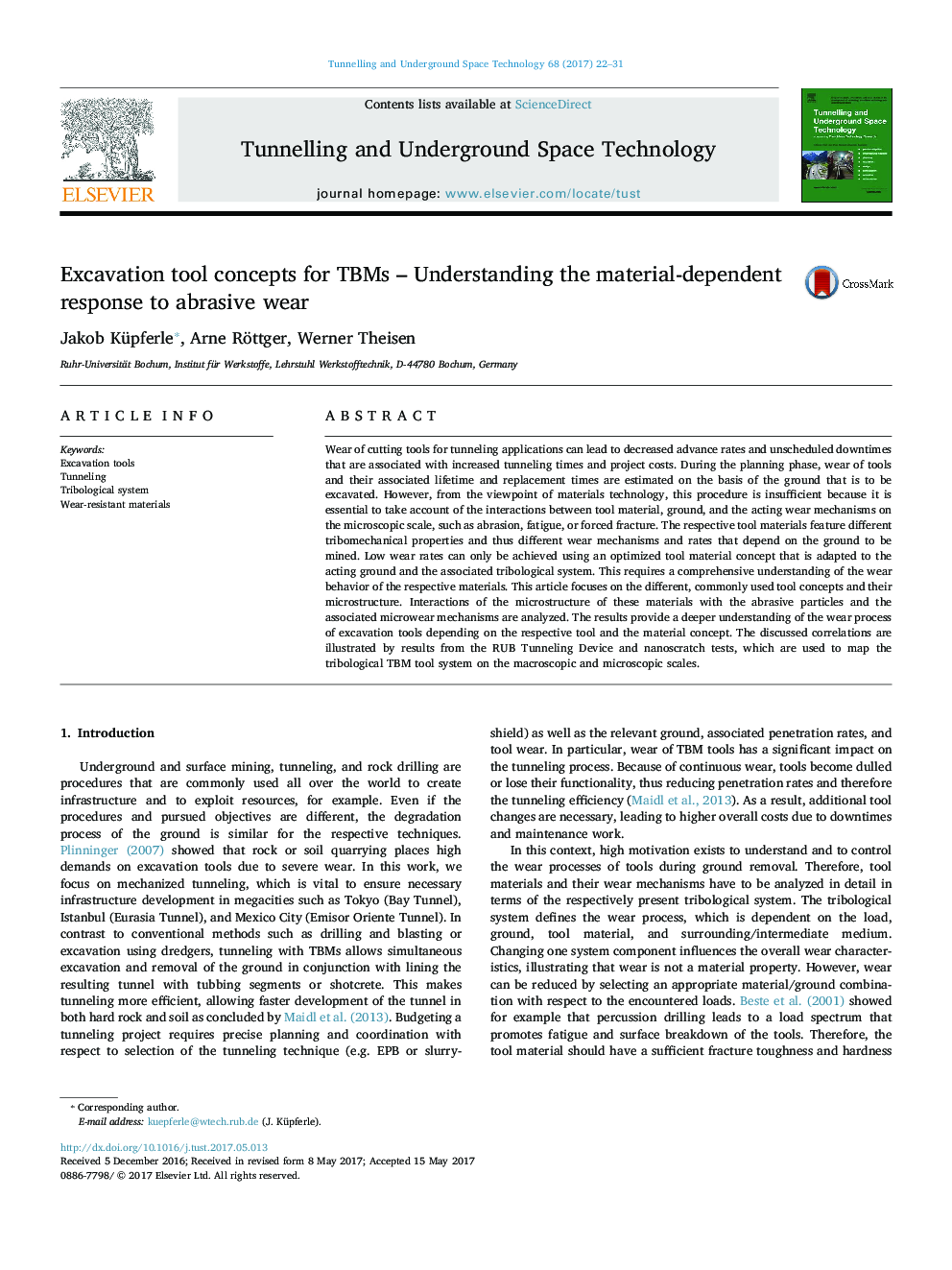| Article ID | Journal | Published Year | Pages | File Type |
|---|---|---|---|---|
| 4929346 | Tunnelling and Underground Space Technology | 2017 | 10 Pages |
Abstract
Wear of cutting tools for tunneling applications can lead to decreased advance rates and unscheduled downtimes that are associated with increased tunneling times and project costs. During the planning phase, wear of tools and their associated lifetime and replacement times are estimated on the basis of the ground that is to be excavated. However, from the viewpoint of materials technology, this procedure is insufficient because it is essential to take account of the interactions between tool material, ground, and the acting wear mechanisms on the microscopic scale, such as abrasion, fatigue, or forced fracture. The respective tool materials feature different tribomechanical properties and thus different wear mechanisms and rates that depend on the ground to be mined. Low wear rates can only be achieved using an optimized tool material concept that is adapted to the acting ground and the associated tribological system. This requires a comprehensive understanding of the wear behavior of the respective materials. This article focuses on the different, commonly used tool concepts and their microstructure. Interactions of the microstructure of these materials with the abrasive particles and the associated microwear mechanisms are analyzed. The results provide a deeper understanding of the wear process of excavation tools depending on the respective tool and the material concept. The discussed correlations are illustrated by results from the RUB Tunneling Device and nanoscratch tests, which are used to map the tribological TBM tool system on the macroscopic and microscopic scales.
Keywords
Related Topics
Physical Sciences and Engineering
Earth and Planetary Sciences
Geotechnical Engineering and Engineering Geology
Authors
Jakob Küpferle, Arne Röttger, Werner Theisen,
